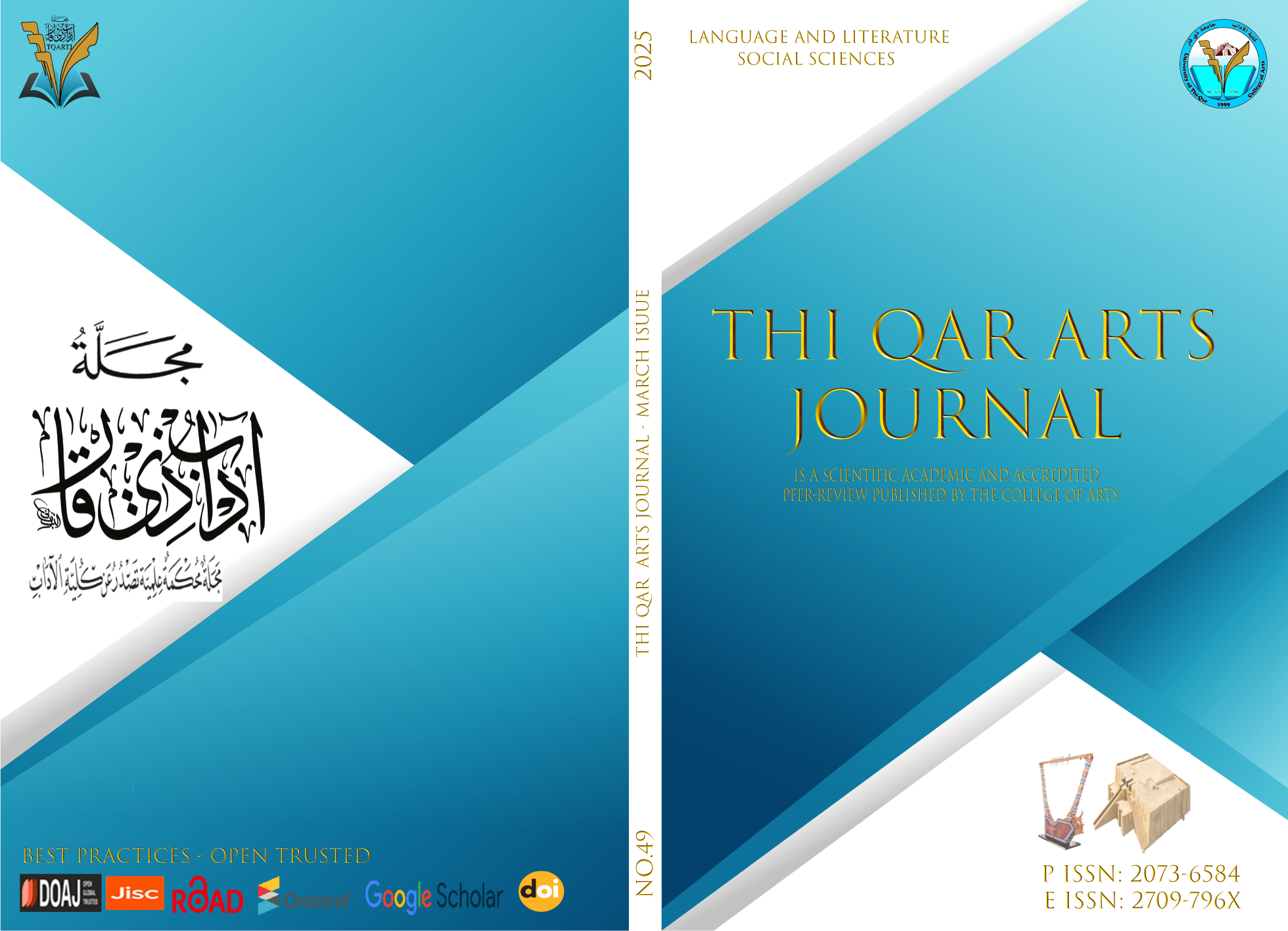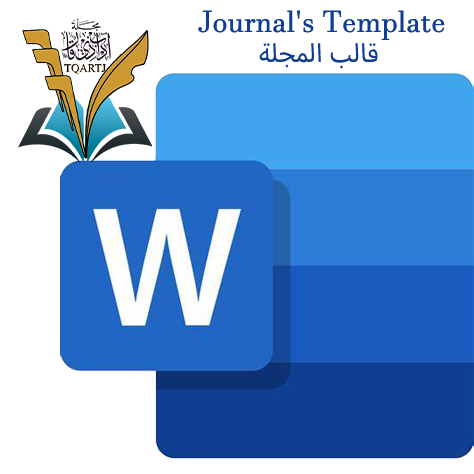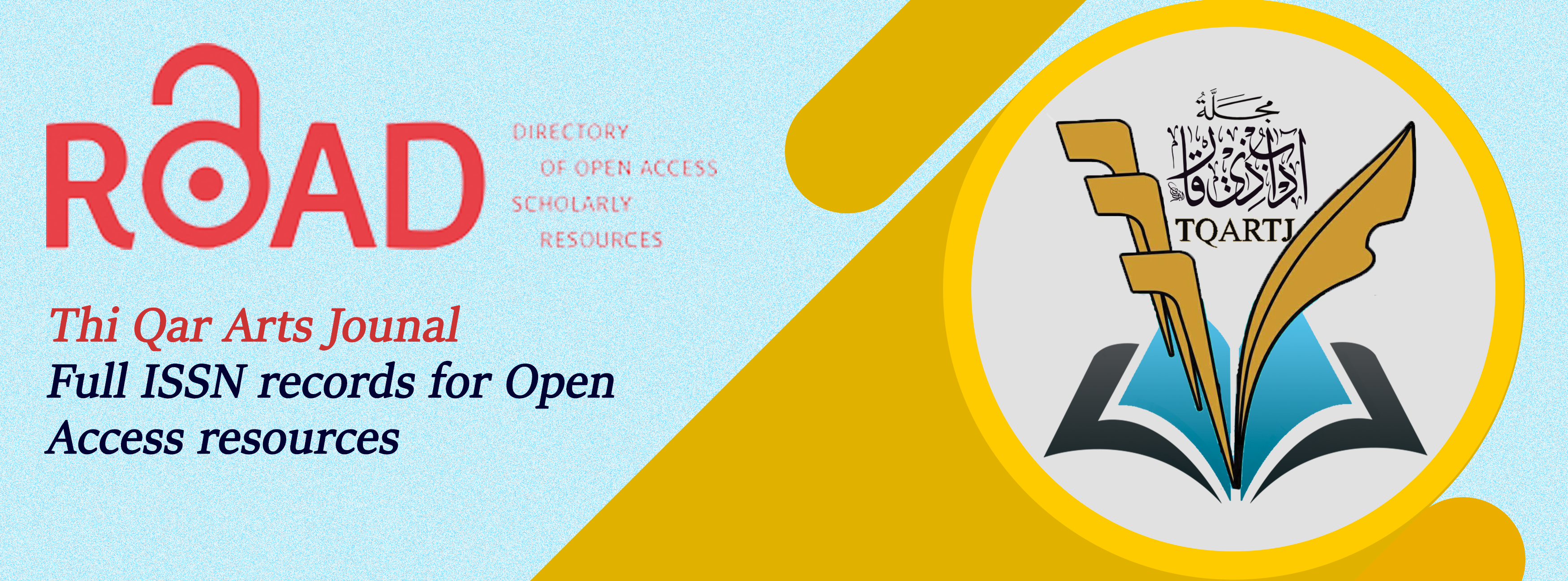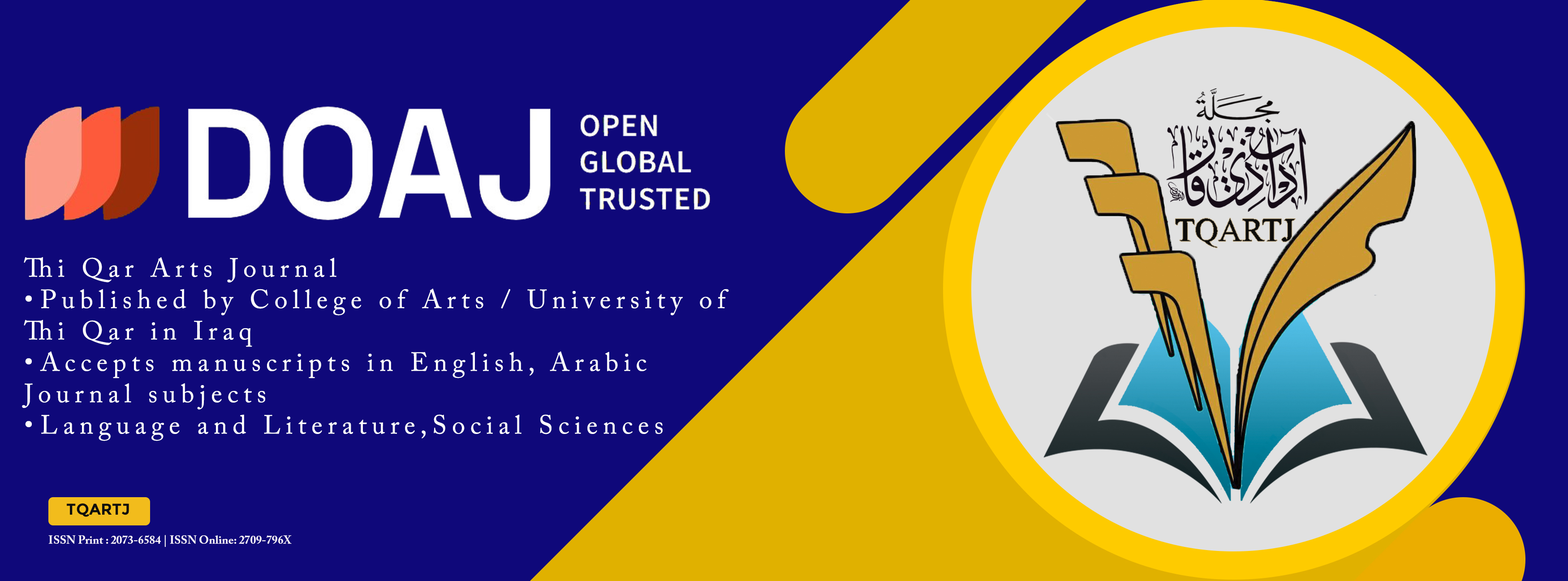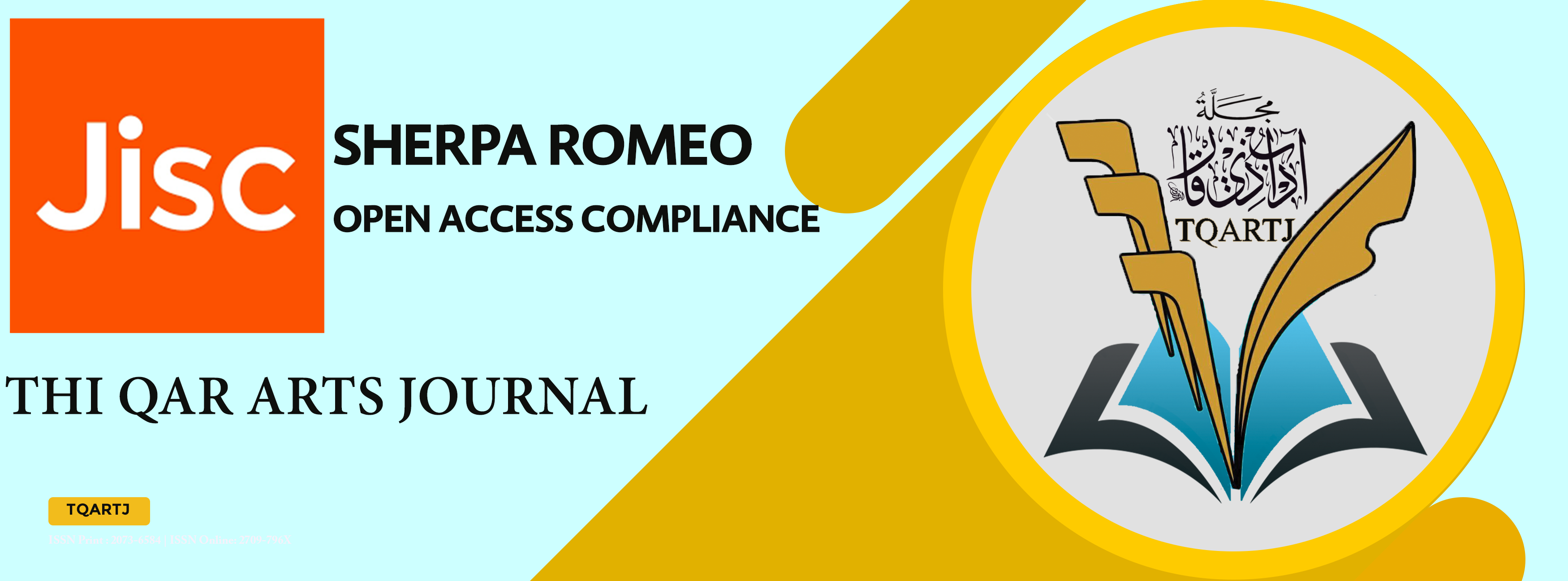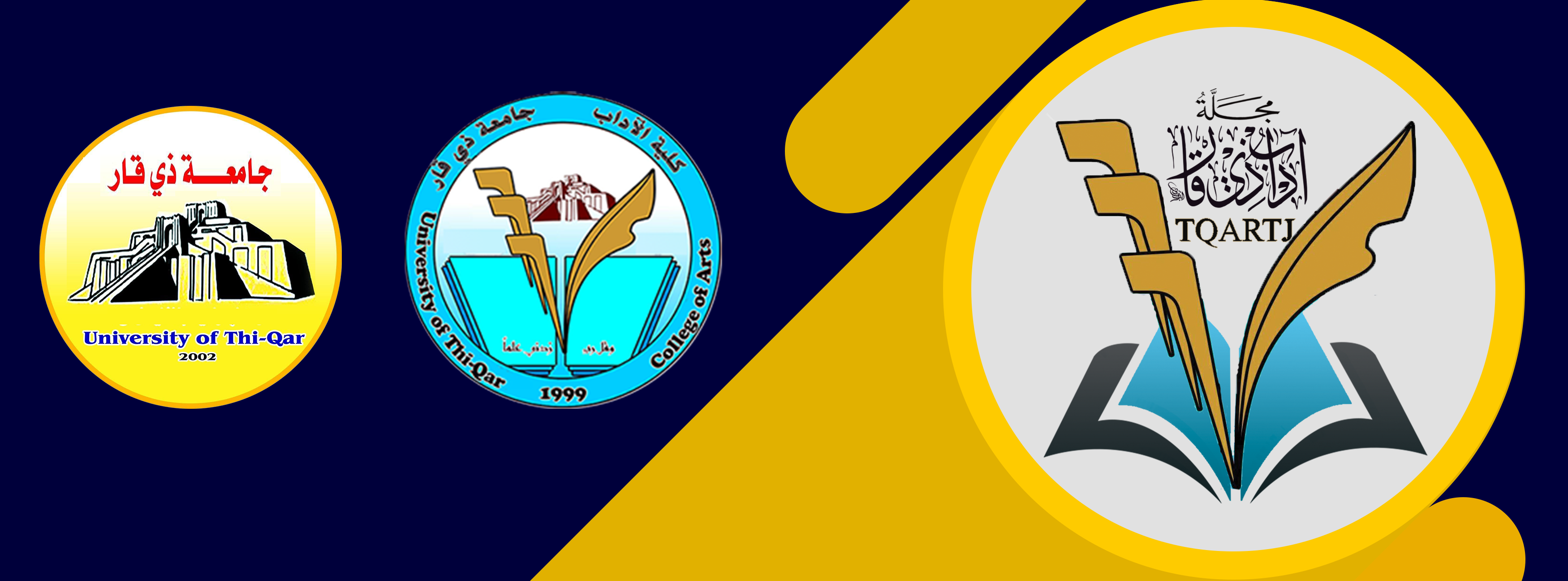Aspects of Grammatical Cohesion in Imam Hussein's (peace be upon him) Speech to Muawiya
Aspects of Grammatical Cohesion in Imam Hussein's (peace be upon him) Speech to Muawiya
DOI:
https://doi.org/10.32792/tqartj.v1i49.768Keywords:
السبك النحوي , الاحالة , الحذفAbstract
This research aims to utilize the findings of textual linguistics to clarify the role that cohesion plays in constructing the text and organizing the information within it. It also seeks to uncover the methods adopted by the researcher to achieve this goal, with grammatical cohesion being at the forefront. The research focuses on analyzing Imam Hussein's (peace be upon him) speech directed at Muawiya, presenting a deep textual study befitting the status of the author (Imam Hussein, peace be upon him). The research highlights a noticeable aesthetic effect in the coherence of the text in terms of form and content, charging it with concepts of confrontation and resistance that motivate the Islamic community to resist all forms of deception, falsehood, and distortion of principles practiced by the Umayyad party. The mechanisms of grammatical cohesion formed the basis for the vision of the noble Husseini text, searching for the pearls of beauty and elements of creative coherence. The textual features contributed to the continuous flow of the speech, leading to clear textual and semantic coherence. The research relied on cohesion as one of the most prominent textual standards identified by text scholars to demonstrate textual coherence. In this context, the elements of reference were addressed as a main factor of grammatical cohesion, capable of bridging gaps between parts of the text, creating a relationship of integration between grammatical units, and enhancing coherent expression that allows the recipient to navigate between parts of the text and understand its symbols. The element of substitution was also reviewed as an effective means within the text, granting the reader mental focus on the structural changes in the text's construction. The research then moved to the element of ellipsis as a linguistic method that stimulates the recipient's mind to search for hidden elements and reimagine them in this text. The final element discussed was conjunction, which serves as an effective means of textual coherence due to its diverse tools and frequent occurrence in the text, contributing to the recipient's engagement with the speech and understanding it. The research represents a deep analytical study of Husseini's speech, focusing on the role of grammatical cohesion in constructing the text and organizing information. It examines how Imam Hussein (peace be upon him) used grammatical cohesion methods to create textual and semantic coherence, enabling the recipient to understand the message more deeply. The study clearly shows how these elements contribute to creating a well-structured and impactful text that discusses noble issues and motivates the Islamic community to resist oppression. Husseini's speech emerges as a high intellectual value that demonstrates moral and faith-based challenge against corruption and deception. In this way, the text seeks to highlight the aesthetics of language and its interactions as an effective tool for spreading awareness and bringing about change, aligning with the spirit of Husseini's message that aims to achieve justice and eliminate oppression.
Downloads
References
1. ابراهيم خليل . (1997). الاسلوبية ونظرية النص ط1. بيروت: المؤسسة العربية للدراسات والنشر.
2. ابو منصور احمد بن علي الطبرسي . (1380). الاحتجاج .ط1. قم: منشورات الشريف الرضي.
3. احمد محمد عبد الراضي . (2008). نحو النص بين الاصالة والحداثة ط1. القاهرة: مكتبة الثقافة الدينية.
4. احمد عفيفي. (بلا تاريخ). الاحالة في نحو النص. القاهرة: كلية دار العلوم - جامعة القاهرة.
5. احمد عفيفي. (2001). نحو النص اتجاه جديد في الدرس النحوي ط1 القاهرة: مكتبة زهراء الشرق.
6. الازهر الزناد. (1993). نسيج النص بحث في ما يكون به الملفوظ نصا ط1 . بيروت: المركز الثقافي العربي.
7. السيد محسن الامين . (1983). اعيان الشيعة . بيروت : دار التعارف للمطبوعات .
8. جار الله الزمخشري. (1998). اساس البلاغة ط1 . (محمد باسل عيون السود، المحرر) بيروت : دار الكتب العلمية .
9. حسام احمد فرج. (2007). نظرية علم النص رؤية منهجية في بناء النص النثري ط1. القاهرة: مكتبة الاداب.
10. خولة طالب لإبراهيمي. (2006). مبادئ في اللسانيات ط2 . الجزائر: دارلا القصبة للنشر.
11. روبرت دي بو جراند. (1998). النص والخطاب والاجراء ط1 . (تمام حسان، المترجمون) القاهرة: عالم الكتاب.
12. سعيد يقطين. (1 اكتوبر, 2003). من النص الى النص الغائب. مجلة عالم الفكر، صفحة 275.
13. صبحي إبراهيم الفقي. (2000). علم اللغة النصي بين النظرية التطبيق دراسة تطبيقية على السور المكية ط1. القاهرة: دار قباء للنشر والتوزيع.
14. صلاح الدين صالح ينظر :حسنين . (2005). الدلالة والنحو ط1. القاهرة: مكتبة الاداب.
15. عبد الحسين احمد الاميني . (1994). الغدير في الكتاب والسنة والادب ط1. بيروت: مؤسسة الاعلمي للمطبوعات.
16. عبد الله البحراني . (1425). عوالم العلوم والمعارف والاحوال ط2. قم: مدرسة الامام المهدي.
17. عثمان ابو زنيد. (2010). نحو النص اطار نظري ودراسة تطبيقية ط 1. اربد: عالم الكتاب الحديث.
18. عزة شبل. (2009). علم لغة النص النظرية والتطبيق ط2. القاهرة : مكتبة الاداب .
19. علي بن عيسى الاربلي . (2012). كشف الغمة في معرفة الائمة . قم: مركز الطباعة والنشر للمجمع العلمي لاهل البيت .
20. عمر ابو خرمة . (2004). نحو النص نقد النظرية وبناء اخرى ط 1. اربد: عالم الكتاب الحديث.
21. محمد باقر المجلسي . (1983). بحار الانوار. ط3. (لجنة من العلماء، المحرر) بيروت: دار احياء التراث.
22. محمد خليفة محمود . (1 2, 2009). التوحد الابداعي في نحو النص . قصيدة زحلة لامير الشعراء نموذجا. مجلة الدراسات العربية.
23. محمد صلاح زكي . (2007). البلاغة والاسلوبية عند السكاكي. غزة: جامعة الازهر .
24. محمد الاخضر الصبيحي. (2008). مدخل الى علم النص ط1 . الجزائر: الدار العربية للعلوم ناشرون.
25. محمد بن عبد الله ابن قتيبة. (1990). الامامة والسياسة/ ط1. (علي شيري، المحرر) بيروت: دار الاضواء.
26. محمد خطابي. (2006). لسانيات النص مدخل الى انسجام الخطاب ط2. الدار البيضاء: المركز الثقافي العربي.
27. نادية رمضان النجار . (2006). علم اللغة النصي بين النظرية والتطبيق الخطابة النبوية نموذجا . مجلة علوم اللغة (2).
28. نور الله الحسيني المرعشي . (بلا تاريخ). احقاق الحق وازهاق الباطل . قم : منشورات مكتبة اية الله العظمى المرعشي النجفي .
29. هادي نهر. (1987). التراكيب اللغوية في العربية دراسة وصفية تطبيقية. بغداد: ساعدت الجامعة المستنصرية على طبعه.
Published
License
Copyright (c) 2025 جاسم محمد العمري

This work is licensed under a Creative Commons Attribution 4.0 International License.
The journal applies the license of CC BY (a Creative Commons Attribution International license). This license allows authors to keep ownership of the copyright of their papers. But this license permits any user to download, print out, extract, reuse, archive, and distribute the article, so long as appropriate credit is given to the authors and the source of the work. The license ensures that the article will be available as widely as possible and that the article can be included in any scientific archive.
